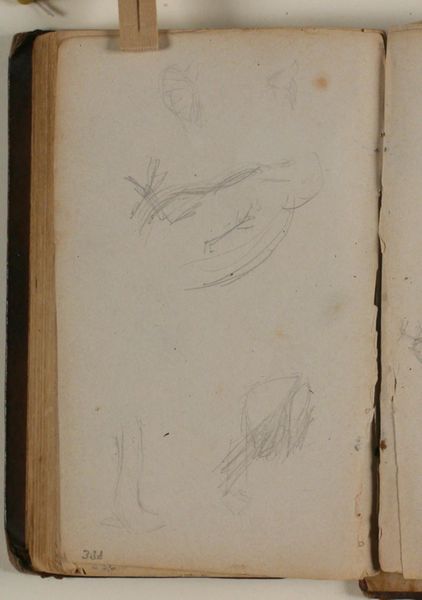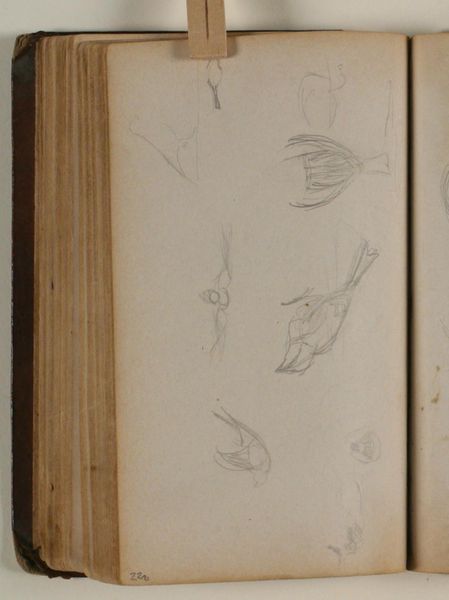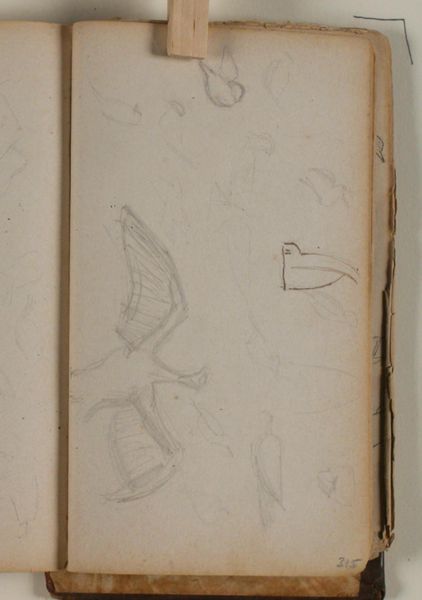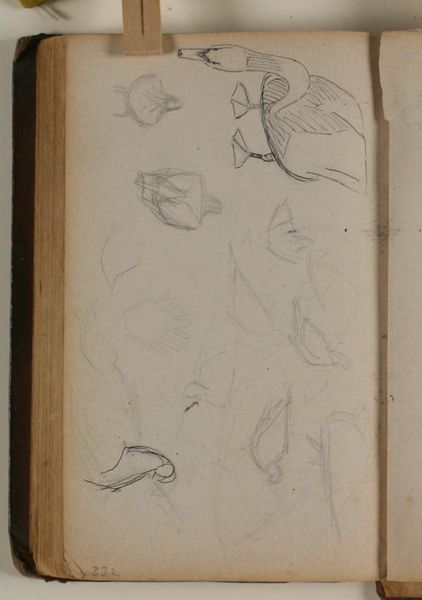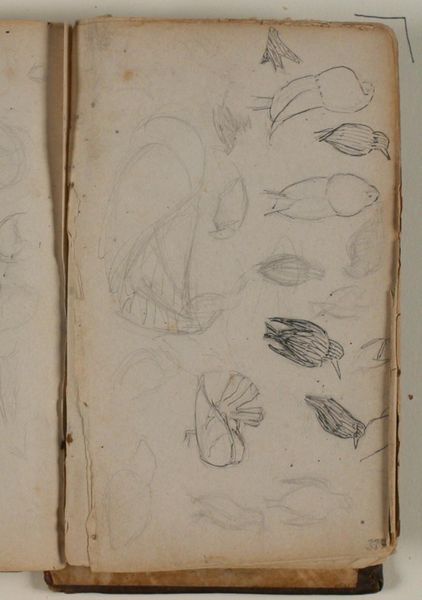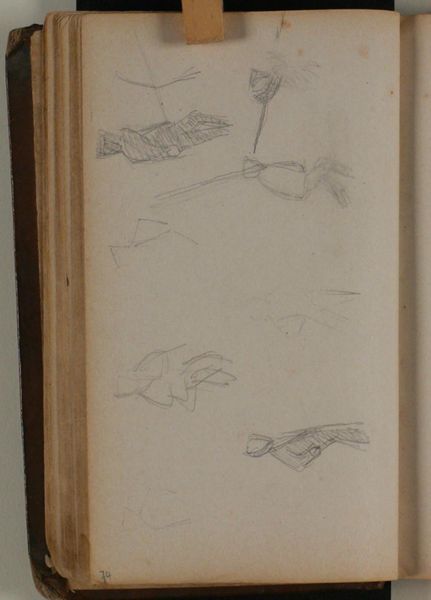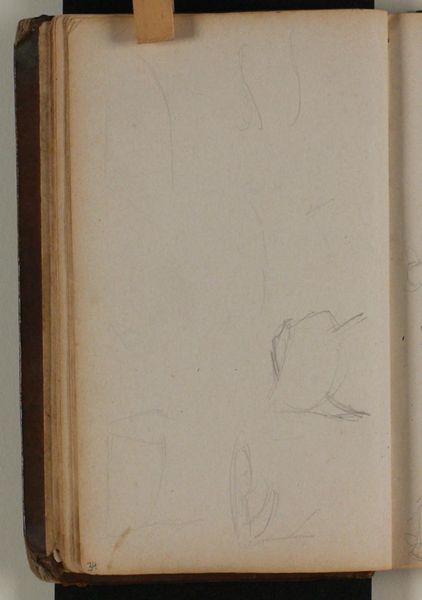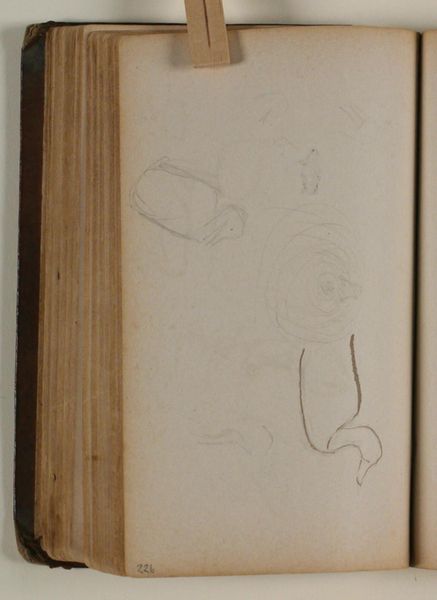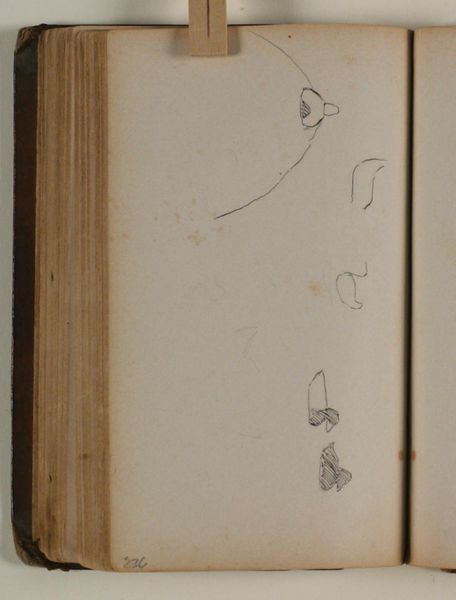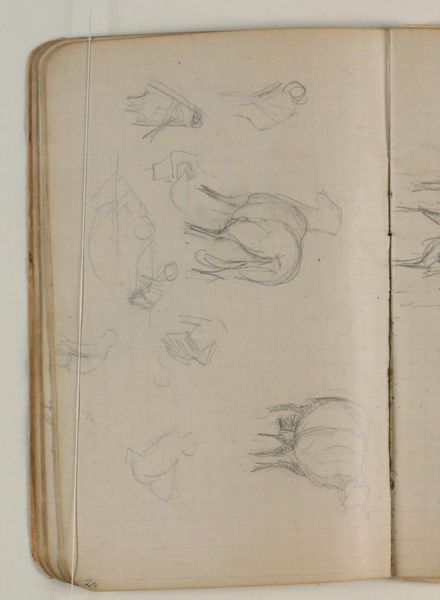
drawing, paper, pencil, graphite
#
drawing
#
figuration
#
paper
#
pencil
#
graphite
Dimensions: 162 mm (height) x 98 mm (width) (monteringsmaal)
Curator: These pages give us such an intimate look into the artist's process. This piece, "Figurskitser", by Niels Larsen Stevns, created between 1864 and 1941, presents us with multiple figure studies in pencil and graphite on paper. It's held at the SMK, the National Gallery of Denmark. Editor: My first impression is one of fragmented movement, like catching glimpses of fleeting moments. There's a looseness to the figures that feels more suggestive than descriptive. I see vulnerability here, studies almost embryonic. Curator: The material qualities reinforce that sense of the tentative. The pencil sketches feel immediate, less about creating a finished product and more about working through ideas of human form. The labor evident in these rapid gestures invites reflection on the artist's intent and skill, too. Editor: Precisely, and it makes me think about the act of observation itself during that period. Were these models posed? Or stolen moments of everyday life? Were these studies influenced by political undertones surrounding representation of the body at the time? It feels critical to consider what freedoms and constraints might have informed his work. What biases, conscious or unconscious, seeped in. Curator: That’s insightful. Considering the broader historical context definitely adds layers of complexity. As an object, this sketchbook provides some evidence to broader networks of production and access. Paper, pencils, graphite--materials manufactured and distributed on a massive scale by the late nineteenth century and early twentieth. This artist had relative freedom of expression because the infrastructure permitted such actions to even take place. Editor: The incomplete nature of these figures also resists easy categorization, allowing for an ongoing dialogue around themes of identity and embodiment. Who were these people? What sort of world do their imagined lives contain? By opening that question to consideration, Stevns creates room for us to actively project ourselves and our own stories into that absence, into that open ended potentiality. Curator: It speaks volumes, how raw material like paper can be used for different purposes and applications by individuals such as artists. Each of us engages in the act of production when viewing, shaping our views. It’s exciting to think of all the future interpretations contained on these humble pages. Editor: Absolutely. This encounter reminds us that meaning-making is a collaborative process. History, medium, and the act of viewership intersect in the shared effort to construct meaning. It urges us to always interrogate the historical baggage embedded in artistic choices while appreciating the simple elegance and utility of the base materials.
Comments
No comments
Be the first to comment and join the conversation on the ultimate creative platform.

